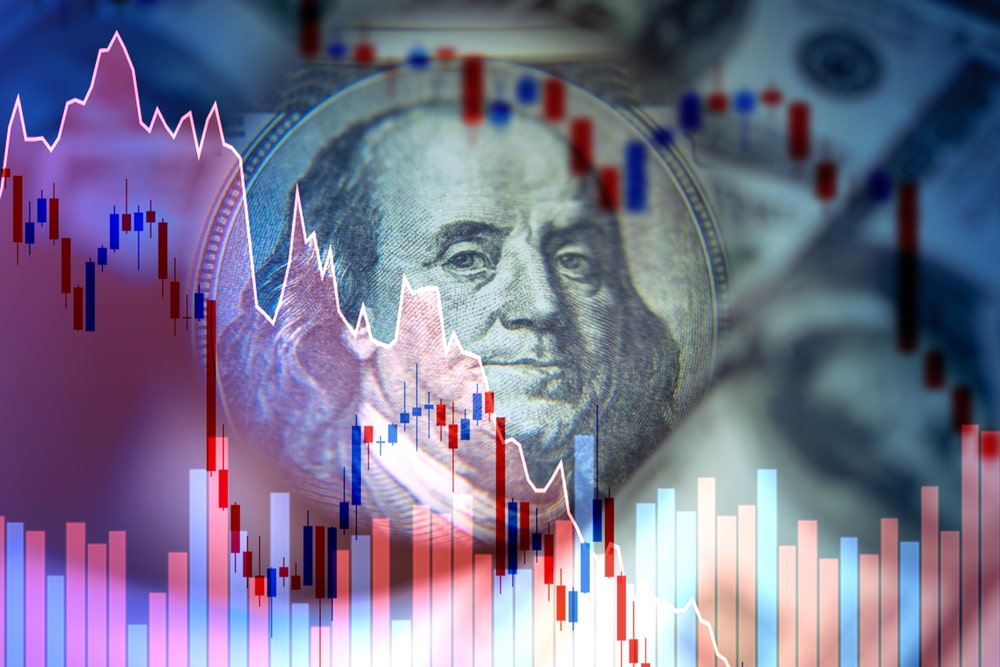
The US’s $28.3 trillion debt mountain is a deficit whose peak has long since burst through a cloud of calculated political indifference. Everyone knows it’s there, but no politician or economist wants to tackle it, let alone acknowledge it.
But like all inconvenient truths, it cannot be ignored for ever because it casts a long shadow over a US economy which is feeling the chill of spending more on debt interest than defence with a deficit which currently stands at 7pc.
Against this mountainous backdrop of debt, borrowing costs have risen sharply over the last month, with the yield on 10-year Treasuries climbing by 63 basis points to 4.36pc, according to an article in the Daily Telegraph
The article questions whether bond vigilantes will impose fiscal discipline, just as they did in the aftermath of Liz Truss’s UK mini-Budget, however, Russell Group has longer memories that go back to the last Century when Lloyd’s of London suffered a market meltdown (the infamous LMX spiral) that nearly did for that organization. Are there echoes of that crisis in what is happening in the US today?
As the Telegraph articles states: “there is a financial trade that is increasingly causing alarm among officials across the world. Hedge funds have built up complex trades worth more than $1 trillion based on US debt, funded by borrowing short-term from banks and selling to pension funds.”
The report says: “The Bank of England noted last month that the trade had reached a new high, growing to $1 trillion from a previous record of $875bn. Officials warned that the trades could trigger a market meltdown in a worst-case scenario.”
Hedge funds buy US debt – known as treasuries – and then sell futures contracts based on that debt to investors, but as the article makes clear, the worry is that hedge funds milk the returns from these trades using borrowed money, however their positions are hyper-leveraged which of course, entails a lot of risk.
That is not necessarily, the main problem. Risk is risk. If you have a high appetite for risk, that is fine. What is concerning, and possibly echoes the LMX spiral of 30 odd years ago, is that Hedge funds raise the money through so-called repurchase agreements (repos), a form of short-term borrowing from big banks.
The Telegraph notes: “While the trade itself is complex, it does not take a genius to see that borrowing against an asset to fund more purchases of that asset is a risky proposition. It could collapse like a house of cards.”
The article also quotes Raphael Gallardo, chief economist at French asset manager Carmignac, who says:
“When they buy the Treasury on the cash market, they fund it on the repo market,” Gallardo says. “Of course nobody knows how many times the same treasury bond is repoed.”
Hedge funds had more than $550bn in treasury trades that were backed by just $10bn of their own cash at the end of 2023, research by the Federal Reserve has found.
A forced “unwind” could cause ripple effects in the market that would send shock waves around the world.
The parallels with the Lloyd’s LMX spiral will be clear to anyone working in EC3 who is more than 50 years old!
Indeed, The Bank of England has reportedly highlighted several possible triggers that could cause “severe but plausible stresses” in the markets.
The Telegraph reports that; “One such trigger could be if hedge funds suffered big losses on other investments, prompting them to exit the treasury trade rapidly.”
Anyone in the (re)insurance market that has been reading Russell’s articles on connected risk will be able to draw comparisons from their own experience. Also, people working in financial services will draw comparisons to the liability-driven investment crisis that nearly toppled pension funds following the infamous Liz Truss mini-Budget.
Whichever way you look at it, there is clearly a danger in not being able to name and know these risks. Or, as the article concludes, “the data feels very cloudy.” Perhaps that is what happens when a mountain of debt accumulates huge amounts of peak liability exposures above the clouds.